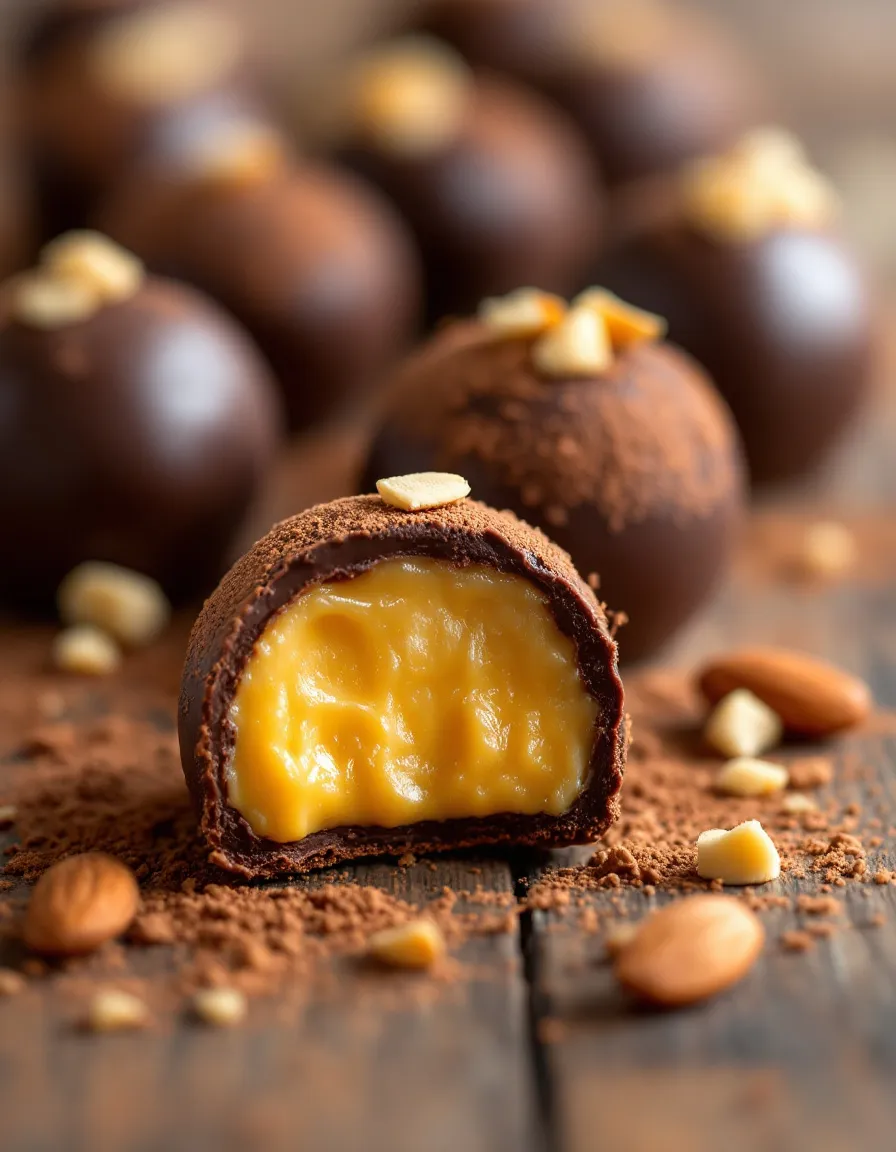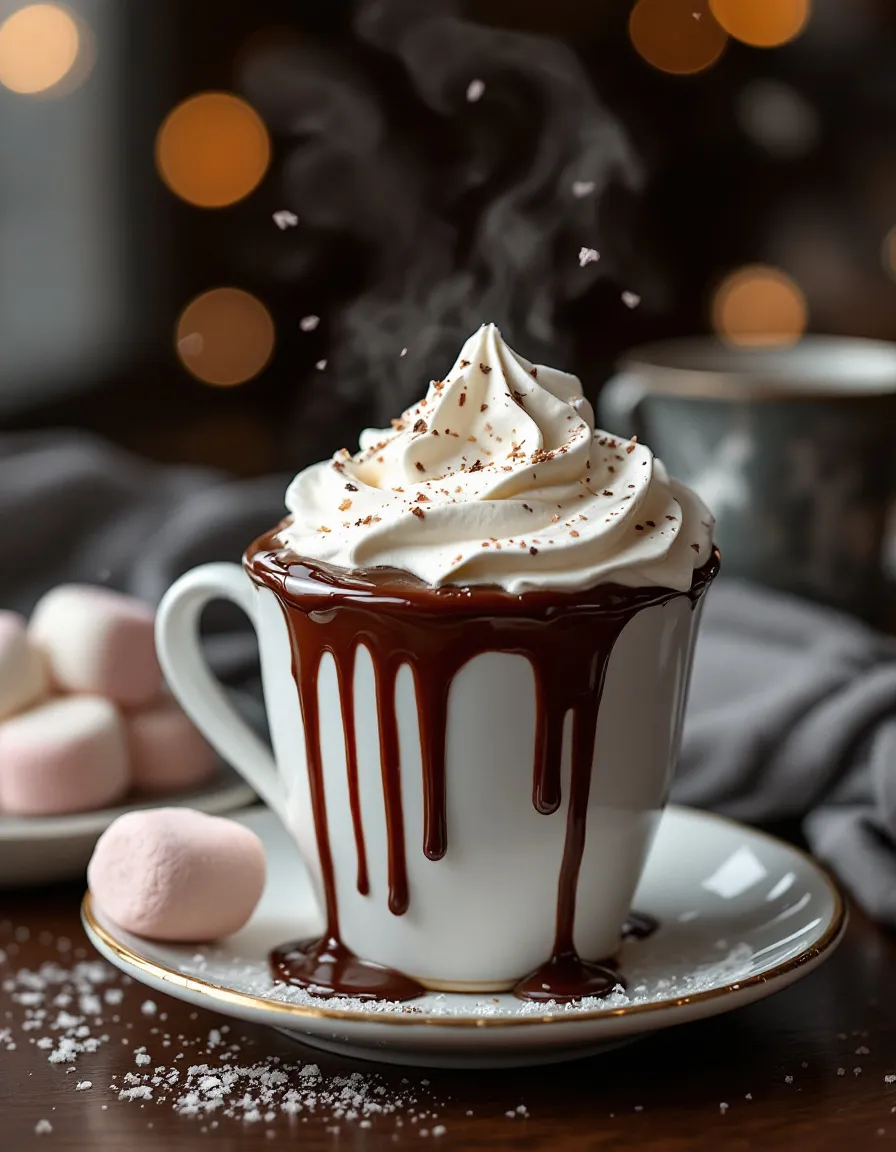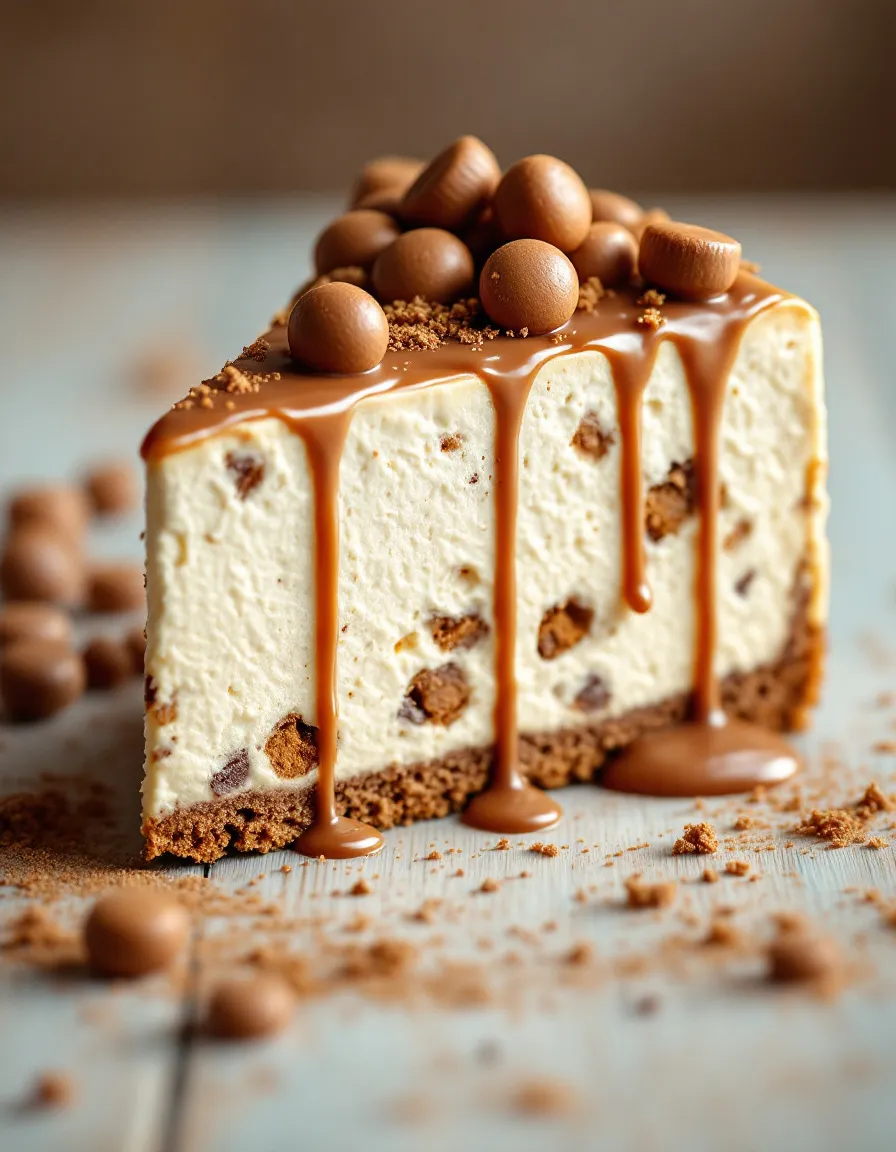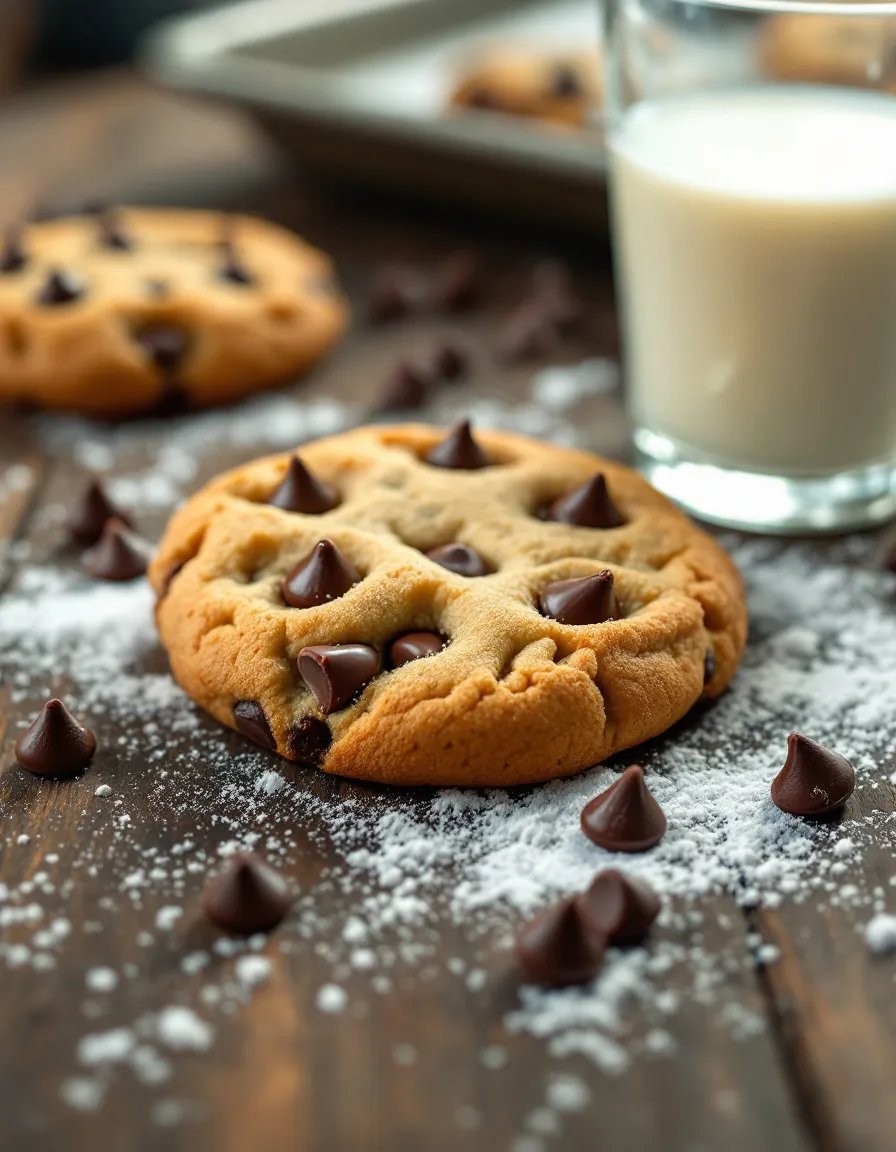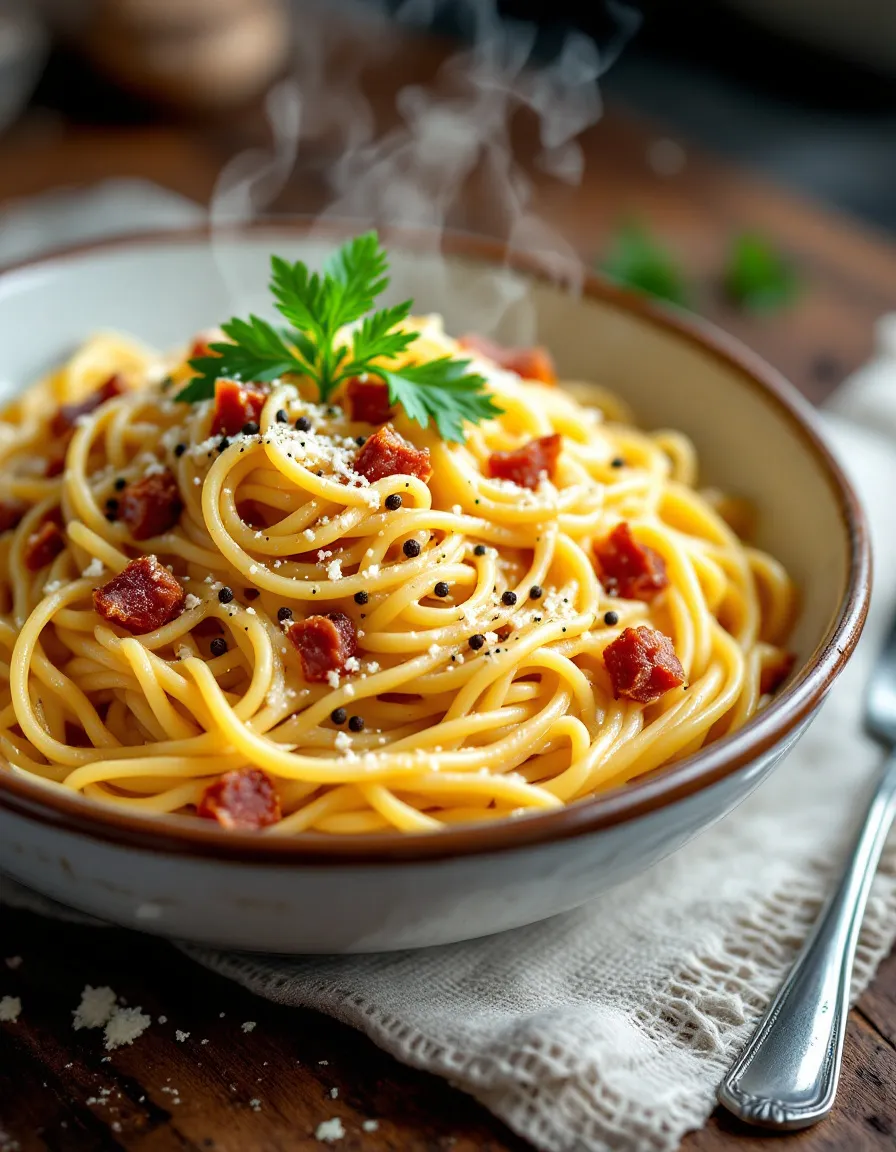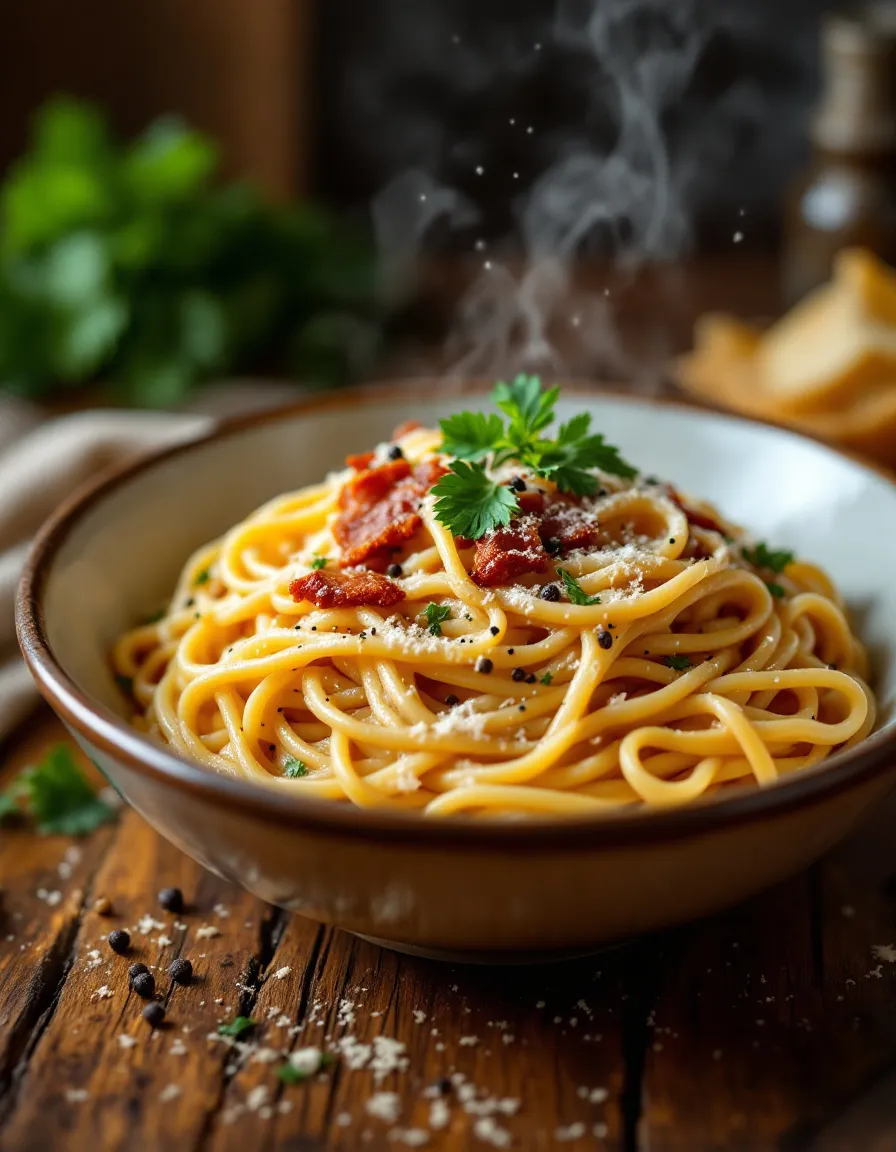Indulge in Decadence: Amaretto Chocolate Truffles Recipe
If you’re searching for an exquisite treat that combines rich chocolate with a hint of almond flavor, you’ll love this Amaretto Chocolate Truffles recipe. These delectable truffles melt in your mouth, revealing a decadent inner filling infused with the sweet allure of amaretto liqueur. Perfect for any occasion, these truffles can elevate your dessert game, impressing guests at parties or indulging yourself after a long day. The combination of smooth chocolate and aromatic amaretto creates an unforgettable taste experience.
Making these truffles is not only a rewarding culinary adventure but also a fantastic way to impress friends and family. Picture a delightful platter showcasing these handcrafted treats, dusted in cocoa powder or embellished with crushed nuts. Each bite delivers a perfect balance of sweetness and a subtle crunch, enhancing their elegant presentation. As you prepare these Amaretto Chocolate Truffles, the delightful aromas of melting chocolate and warming liqueur will fill your kitchen, promising a very sweet reward when they’re done.
Quick Recipe Highlights
- Flavor Profile: Rich dark chocolate pairs beautifully with the nutty, sweet notes of amaretto, creating a sophisticated dessert for chocolate lovers.
- Texture: These truffles feature a silky ganache center that contrasts wonderfully with a smooth outer shell, delivering a delightful mouthfeel.
- Aroma: The fragrance of roasted almonds from the amaretto complements the rich scent of cocoa, evoking warmth and elegance.
- Visual Appeal: Dusted with cocoa powder or rolled in chopped nuts, these truffles are visually stunning and sure to catch the eye.
- Skill Level Needed: With moderate skill, anyone can craft these charming treats, from beginners to experienced bakers.
- Special Equipment: You’ll need a double boiler, mixing bowls, and a sweet tooth for this luxurious recipe!
Recipe Overview
- Difficulty Level: Moderate, as it involves melting chocolate and rolling truffles to perfection, but achievable for most home cooks.
- Category: Perfect for desserts or sweet snacks, these truffles fit well into any meal plan for both fancy gatherings and casual family nights.
- Cuisine: These truffles draw inspiration from Italian traditions, making them a great addition to any European-inspired dessert table.
- Cost: The ingredients are reasonably priced, making this indulgent treat both accessible and affordable for any chocolate enthusiast.
- Season: Ideal for winter and holiday entertaining, but delightful anytime you want a sweet treat.
- Occasion: Perfect for birthdays, anniversaries, or holiday gatherings, these truffles can shine as elegant gifts as well.
Why You’ll Love This Recipe
Indulging in Amaretto Chocolate Truffles is a delightful experience that combines taste and luxury. The rich, velvety chocolate mastery envelops a flavorful amaretto center, leaving your palate satisfied. Each truffle encapsulates a sweet moment, making them ideal for special occasions or just because. The harmonious blend of flavors not only pleases the taste buds but creates a sensory delight that invites you back for more.
Convenience is key in today’s kitchen, and the preparation of these truffles is straightforward. The simplicity of the process is one of the reasons this recipe has become a favorite among home bakers. Even for novice cooks, the steps involve minimal equipment and can be achieved without any specialized skills. Furthermore, the truffles can be made ahead of time, allowing you to prepare for gatherings without last-minute stress.
Not only are these truffles a sweet indulgence, but they also provide nutritional benefits from the quality chocolate and almonds. Dark chocolate contains antioxidants, while amaretto offers a hint of the almond flavor that is both soothing and rich. The small serving sizes make it easy to savor the treat without overindulging, aligning well with various dietary preferences.
The social aspect of sharing these delightful truffles adds to their charm. Imagine presenting them on a platter during a gathering, inviting friends and family to enjoy a taste of luxury together. Their elegant look and delicious flavor make them a conversation starter, encouraging guests to share their own sweet stories.
With cost-effectiveness in mind, this recipe allows you to create gourmet-style truffles at home without the expense of buying them from a high-end chocolatier. The ingredients are easily accessible and can be found at local grocery stores, making this dessert an attainable luxury anyone can create.
Historical Background and Cultural Significance
The origins of chocolate truffles can be traced back to the 19th century in France, initially crafted by pastry chefs using a mixture of chocolate and cream. As this delicacy spread across Europe, variations emerged, incorporating local ingredients such as amaretto, resulting in the delightful Amaretto Chocolate Truffle. This particular version emphasizes the marriage of chocolate and almond flavors, deeply rooted in Italian traditions.
Within Italian cuisine, amaretto liqueur has a distinctive place, celebrated for its sweet, nutty flavor derived from almonds. It not only enhances desserts but also symbolizes the craft of Italian distillation. Including amaretto in chocolate creations intertwines culinary histories, demonstrating how local ingredients can elevate traditional sweets.
As food trends evolved, chocolate truffles became synonymous with gourmet desserts, showcasing the artistry of confectionery. The muddy exterior and creamy center of truffles have made them a festive treat, especially appreciated during the holiday seasons, embodying the essence of sharing and celebration.
Regional variations of these truffles can be found in different countries, showcasing unique flavor correlations such as the addition of spices, fruits, or liqueurs. These adaptations represent the creativity of local bakers, expanding the truffle repertoire beyond its French beginnings.
Ingredient Deep Dive
Dark Chocolate
Dark chocolate is a fundamental component in most truffle recipes, known for its rich flavor and health benefits. Originating from the cacao bean, dark chocolate has gained popularity for its antioxidant properties, making it a favored choice among health-conscious consumers. When selecting dark chocolate for truffles, aim for high-quality chocolate with at least 70% cacao, as it enhances the flavor profile significantly. Store your chocolate in a cool, dark place to maintain its integrity, and consider using it within six months for optimum freshness.
Amaretto Liqueur
Amaretto is an almond-flavored liqueur that enriches the flavor of various dishes and desserts. Its origins can be traced back to Italy in the 16th century, where it was initially created as a transitional drink for many festive occasions. Nutritional-wise, while imbibed in moderation, amaretto can provide a hint of flavor without overpowering sweetness. When choosing amaretto, look for recognizable brands for authentic taste and quality. Always keep the liqueur sealed, stored in a cool area, and used within a year for the best flavor.
Common Mistakes to Avoid
- Using low-quality chocolate: Choosing inferior chocolate can affect both the flavor and texture of your truffles significantly.
- Not letting ganache cool sufficiently: Skipping this step can make the ganache too soft, making it difficult to shape your truffles.
- Overheating chocolate: Chocolate should be melted slowly to prevent burning; a double boiler is ideal for this process.
- Rushing the chilling process: Truffles need ample time to set in the refrigerator, so avoid the temptation to skip this step.
- Inconsistent truffle size: Use a cookie scoop to ensure your truffles are uniform for even cooking and presentation.
- Dipping in chocolate without tempering: If covering with chocolate, make sure it is tempered for a glossy finish.
- Forgetting to wash hands: A gentle rolling and shaping method with clean hands prevents extra messes.
- Using stale or expired ingredients: Always check your chocolate and liqueur are fresh to maintain quality.
- Neglecting cocoa dusting: This adds not only visual appeal but also balances the sweetness effectively.
- Failing to get creative: Don’t hesitate to personalize with different flavorings or garnishes for unique variations.
Essential Techniques
Tempering Chocolate
Tempering chocolate is crucial for achieving a shiny finish and firm texture. To master this technique, melt two-thirds of your chocolate to the right temperature, then add the remaining chocolate to bring it down to a suitable dipping temperature. Ensure not to overheat, as burning the chocolate can ruin its quality and flavor. Look for a glossy appearance and a snap when you break a piece as signs of successful tempering.
Creating Ganache
Ganache is the heart of any chocolate truffle recipe, blending cream and chocolate to form a rich filling. To make ganache, heat the cream until it’s steaming and pour it over chopped chocolate, allowing it to sit before stirring. This method will yield a smooth, velvety texture when mixed properly. Watch for a silky consistency and make sure the chocolate is fully melted for the best results.
Pro Tips for Perfect Amaretto Chocolate Truffles
1. Use high-quality chocolate to ensure your truffles taste gourmet.
2. Chill the ganache thoroughly before rolling; this will make your life easier when shaping.
3. Experiment with flavors by adding extracts or different liqueurs to customize your truffles.
4. Utilize a pastry bag for filling molds for unique shapes and designs.
5. Always wear gloves when rolling the truffles for a polished look.
6. Consider freezing extra truffles for later enjoyment; they freeze beautifully.
7. Garnish with colorful toppings for an attractive presentation; think crushed pistachios or edible gold leaf.
8. Store in an airtight container in a cool place to maintain freshness.
Variations and Adaptations
For those seeking regional variations, consider infusing your truffles with a hint of espresso for an Italian twist. For seasonal adaptations, add festive flavors like peppermint for the winter holidays. Dietary modifications might include using dairy-free chocolate for a vegan version or swapping out the amaretto for a non-alcoholic vanilla extract for those wishing to omit alcohol. Explore flavors by introducing additional spices, such as cinnamon or cardamom, for an exotic touch. Lastly, serving these truffles in different presentations, like on mini dessert spoons or in elegant paper cups, can elevate any gathering.
Serving and Presentation Guide
When serving Amaretto Chocolate Truffles, consider using elegant platters for a refined display. Arrange truffles neatly, allowing space for guests to take their favorites without making a mess. Garnishing with chocolate shavings or crushed nuts adds visual lushness. Traditional accompaniments include a robust coffee or dessert wine that pairs beautifully with the rich flavors. Temperature also plays a role—serve at room temperature for the best texture. For portion control, consider offering truffle boxes of assorted flavors during gatherings to encourage sharing.
Wine and Beverage Pairing
Pair these luxurious Amaretto Chocolate Truffles with full-bodied red wines, such as Cabernet Sauvignon or Merlot, to complement their deep chocolate tones. For a sweeter option, try dessert wines like Port or Moscato, which harmonize nicely with the almond notes of the amaretto. Non-alcoholic beverages, such as espresso or herbal teas, can also enhance the dessert experience, providing a nice balance to the sweetness. Keep your drinks chilled or warm, depending on your serving preference, for maximum enjoyment.
Storage and Shelf Life
Store your Amaretto Chocolate Truffles in an airtight container at room temperature for up to one week, or refrigerate them for prolonged freshness. Ensure they are fully cooled before sealing to prevent condensation. If you decide to freeze them, use a freezer-safe container, storing them between layers of parchment paper. Truffles can last in the freezer for up to three months. Always watch for signs of spoilage, such as taste changes or unusual odors, particularly if they’ve been stored beyond the recommended times.
Make Ahead Strategies
To streamline your preparation, consider making the truffles up to a week in advance. Plan to make the ganache and roll the truffles, then store them in an airtight container. Chilling the truffles for a couple of hours enhances their firmness for easier handling. If you want to preserve that “just-made” taste, you can coat them in chocolate just before serving. Refresh the presentation with garnishes for added flair right before guests arrive.
Scaling Instructions
Scaling the Amaretto Chocolate Truffles recipe is simple. For halving the batch, reduce all ingredient measurements by 50%, but be mindful of the chilling times, as smaller batches may set more quickly. For doubling or tripling the recipe, ensure your mixing bowl is large enough to accommodate the larger volume, and adjust chilling space accordingly. If you’re preparing a larger batch, you may want to use two baking sheets for easier rolling and chilling logistics.
Nutritional Deep Dive
The Amaretto Chocolate Truffles offer rich flavors, but they also come with a variety of nutritional components. Dark chocolate holds a significant amount of antioxidants and healthy fats while providing a richness in flavor. Each truffle, while indulgent, can be enjoyed in moderation as part of a balanced diet. Consider their caloric content and portion sizes for mindful consumption. The inclusion of almonds through the amaretto adds nutritional value, including protein and fiber, which enhances their overall health profile when enjoyed sparingly.
Dietary Adaptations
For gluten-free baking, ensure all ingredients are certified gluten-free, especially your chocolate. For dairy-free options, select appropriate dairy-free chocolate varieties to create equally decadent truffles. Vegan adaptations can be made by substituting the regular cream with coconut cream, yielding a deliciously smooth result. Those on a low-carb or keto diet can explore using sugar-free chocolate, but keep in mind that this may alter the taste and texture. For a lighter treat, consider reducing the size of each truffle or substituting part of the chocolate with fruit purees for natural sweetness.
Troubleshooting Guide
If your truffles are too soft, ensure that the ganache has sufficiently chilled before rolling. If the exterior chocolate doesn’t set properly, check that you tempered your chocolate correctly. When truffles turn out too sweet, dusting with cocoa powder or adding a sprinkle of sea salt can help balance flavors. If you’re facing issues with ingredient substitutions, always test out new options in small batches before making large quantities. Lastly, overcooked ganache can lead to a grainy texture, so monitor your heat carefully during preparation.
Recipe Success Stories
Community feedback around the Amaretto Chocolate Truffles recipe praises their rich flavor and elegant presentation. Many home cooks have shared their-adaptations, such as incorporating additional spices or using flavored chocolate. A photography enthusiast even mentioned the truffles making an excellent subject, showing off different plating techniques in dessert photos. The recipe’s flexibility in adapting to seasonal ingredients has also resonated with those who try to keep their baking fresh and exciting.
Frequently Asked Questions
Can I make truffles without amaretto?
Absolutely! You can replace amaretto with vanilla extract or any other liqueur that you prefer, tailoring it to your taste.
How long do these truffles last?
When stored in an airtight container at room temperature, the truffles can last for up to one week. Refrigeration can extend their freshness for longer.
Can I store these chocolate truffles in the freezer?
Yes, you can freeze your truffles! Just be sure to place them in a freezer-safe container, layered with parchment paper, for up to three months.
How do I know if my ganache is set?
Your ganache should be firm to the touch and hold its shape when rolled into balls. Chilling it for a couple of hours helps achieve this consistency.
Can I add different flavors to the truffles?
Certainly! You can personalize your truffles with different liqueurs, nuts, or spices to find your perfect flavor combinations.
What should I do if my chocolate is too thick?
If your melted chocolate seems too thick, you can gently stir in a little bit of oil or tempered chocolate to thin it out.
Are these truffles suitable for children?
If made with alcohol, it is advisable to reserve these for adult consumption. However, you can create a non-alcoholic version for kids by replacing amaretto with flavored extracts.
What equipment do I need to make truffles?
You’ll need basic kitchen tools such as a double boiler, mixing bowls, a whisk, and a cookie scoop for shaping your truffles.
Can I make these truffles vegan?
Yes! Substitute dairy cream with coconut cream and ensure to use dairy-free chocolate to keep your truffles vegan-friendly.
Is it necessary to temper the chocolate?
While not mandatory, tempering chocolate will give your truffles a nice glossy finish and improve texture. It’s worth taking the extra time!
What’s the best way to dust the truffles?
Use cocoa powder or finely chopped nuts by rolling the truffles in the chosen dusting material gently to cover them evenly for the fancy finish.
Additional Resources
For those eager to discover more, consider exploring related recipes such as peppermint bark or assorted flavored bonbons, which provide an array of tastes to indulge in. Kitchen technique guides can further enhance dessert-making skills, teaching you the nuances of tempering chocolate or creating specialty fillings. Dive deeper into ingredient information to learn about the origins and health benefits of each component, and get recommendations on essential baking equipment to streamline your process. Plus, look out for seasonal variations that allow you to adjust flavors and presentations to match festive occasions throughout the year.
Join the Conversation
Engagement with the baking community can enhance your experience in making Amaretto Chocolate Truffles. Share your creations on social media with beautiful photos that showcase your culinary artistry, using hashtags that connect you with other dessert lovers. Recipe reviews can provide invaluable insights and inspire others, while discussions about ingredient variations encourage creativity and expand flavor perspectives. Your journey into truffle-making is enriched by the joy of sharing and experiencing the confections created by other passionate bakers.
The Recipe
Amaretto Chocolate Truffles
Serves: 24 truffles
Prep Time: 30 mins
Cook Time: 15 mins
Total Time: 45 mins
Kitchen Equipment Needed
- Double boiler
- Mixing bowls
- Whisk
- Cookie scoop
- Airtight container for storage
Ingredients
- 8 oz dark chocolate, chopped
- ½ cup heavy cream
- ¼ cup amaretto liqueur
- Cocoa powder for dusting
- Finely chopped nuts for optional coating
Directions
- In a double boiler, melt dark chocolate gently over simmering water, stirring occasionally.
- In a separate saucepan, heat the heavy cream until just boiling, then pour it over the chopped chocolate.
- Let the mixture sit for 5 minutes before stirring until smooth.
- Add amaretto liqueur and stir until fully incorporated.
- Transfer the ganache to a bowl and refrigerate for about 1-2 hours until firm.
- Using a cookie scoop, portion out the ganache and roll it into balls quickly using your hands.
- Roll each truffle in cocoa powder or finely chopped nuts to coat.
- Store truffles in an airtight container in the refrigerator until ready to serve.
- Allow truffles to come to room temperature before serving for best texture.
Recipe Notes
- You can customize the flavor by using different liqueurs or extracts.
- Make sure to work with cold hands to prevent the ganache from melting too quickly.
- For a festive touch, consider rolling the truffles in colored sprinkles for special occasions.
